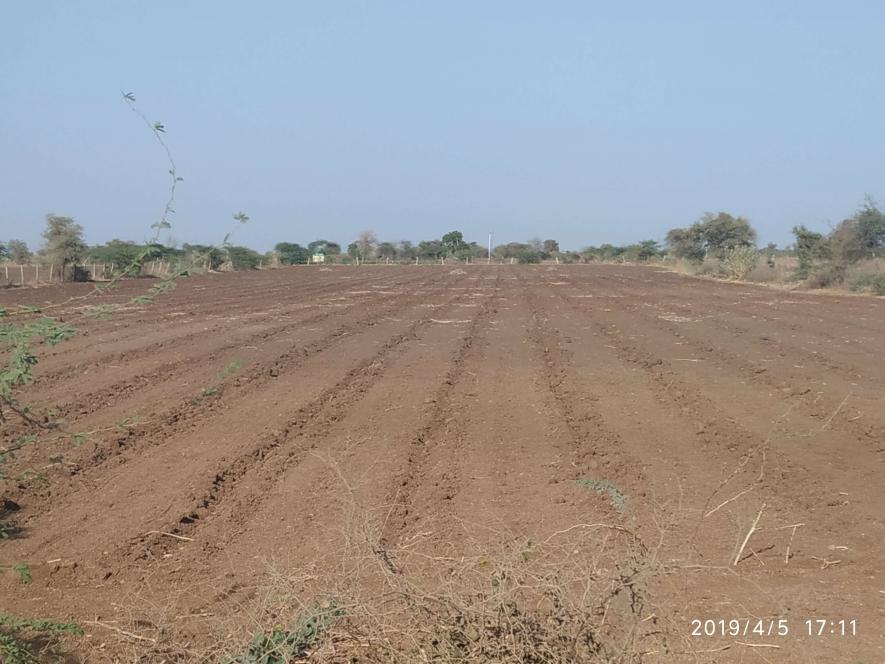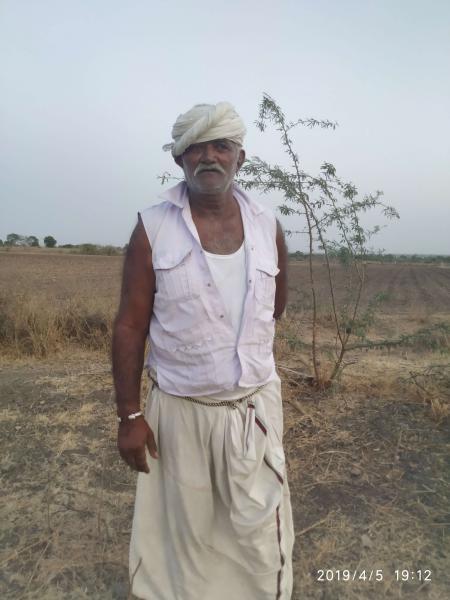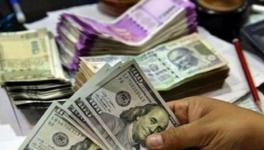Elections 2019: Amidst Drought and Agrarian Distress, Surendranagar Farmers Say No to BJP

Gamrubhai Chogabhai Kagad, a farmer of Chotila village in Surendranagar district owns 35 bigha of land but that hardly sustains his family of ten members. Kagad cultivates for 4 months and for the rest of the year, he works as a labourer.
“In the 2014 Lok Sabha election, I had voted for BJP. This time I won’t vote for BJP again,” Kagad told NewsClick.
“In 2014, I had thought our man, a Gujarati – Narendra Modi is trying to form government at the centre for the first time, so I voted for him. It was not just me, most of us from the village did not even bother about the candidate. There was a wave of a sentiment favouring Modi, which was so overpowering that everyone voted for BJP,” Kagad said.
Failure of Irrigation Schemes
Deprived of rain, arid Surendranagar in Saurashtra region, Gujarat, has been facing agrarian crisis due to lack of irrigation water for years now. In the last three years, two years have been completely drought-hit. Adding to that low MSP of cotton since the year 2012 has made the situation worse for farmers.
Also Read: Farmers Protest Against Land Acquisition for Limestone Mining by Ultra Tech Cement in Bhavnagar
Noticeably, as per reports of Department of Agriculture and Cooperation of Gujarat, government released in 2015 stated that the gross irrigated area in the state is 56.14 lakh hectares which accounts for 45.97% of the total cultivated area. However, data from the Narmada Water Resources, Water Supply and Kalpsaar department shows that only 12,12,130 hectares of area was irrigated by all means of irrigation in 2006-07, which declined to 10,63,190 hectares across the state in 2013-14. Further, the Comptroller and Auditor General report of 2016 shows that only 24% irrigation on average has been achieved by means of all the 22 irrigation schemes in the state. Moreover, in accordance with the report of Narmada Control Authority of 2016-17, even after 17 years of completion of the main canal of Narmada, the canal network work remains incomplete. Only 53.5% of the minor and sub-minor canals that bring water to the agricultural fields have been completed as per the report.
“More than 70% of the agrarian area of Surendranagar district falls in the catchment area of Narmada. Farmers of Surendranagar don’t receive enough irrigation water,” Kagad said.
“The connectivity of minor canals that bring water to the fields have been built till Muli taluka. From there, the canal network has been diverted to Halvad taluka in Morbi district to finally reach Kutch to provide water to the industries,” Ajaybhai Sambad, a farmer from Mota Arania village of Surendranagar told NewsClick.
“Surendranagar district has two major dams – Morsal dam and Triveni Thanga dam. For the last three years that were rain starved, officials and ministers of Gujarat government have announced and conducted inauguration ceremonies of Saurashtra Narmada Avtaran Irrigation (SAUNI) project but these dams are yet to receive any water,” he added.
Also Read: Gujarat Farmers Barred From Entering Own Land as GPCL Mines Lignite Under Police Protection
“During Assembly election in December 2017, the government assured the farmers that water will be supplied till March 2018 that would ensure five cycle of irrigation for cumin, wheat and castor. Deputy Chief Minister Nitin Patel’s statement further assured the farmers and they sowed cumin. However, water was supplied only till January 2018, resulting in crop failure. Cumin, the crop that is reaped last in the season suffered the most,” said Kantibhai Tamaliya, another farmer.
Non-Transparent Crop Insurance
“Another issue that farmers of Surendranagar face is of getting caught in the spiral of a complicated and non-transparent process of claiming crop insurance when crops fail. Despite being drought hit for two years since 2015, only 30% farmers of Surendranagar have received money from the insurance companies. Most farmers don’t even know the name of the company that provides the crop insurance. When a farmer takes loan, the cooperative bank automatically adds the insurance from a company chosen by the government agencies,” he added.
“We have been farmers for 40 years. For eight months in a year, we face acute arid weather and are unable to cultivate our land. Modi had assured us of irrigation water which we are yet to receive. Every year, after cultivating for just 4 months, we leave our village in search of work. Most of us work as labourers in a stone quarry in Sayla village in Surendranagar district or in ceramic factories in Morbi district. The pay is about Rs 200 to Rs 250 a day, which isn’t enough to run our families, educate our children or even fulfil basic needs,” Ramsinhbhai of Chotila village told NewsClick.
“Look our land has totally gone dry. We have 42 bighas of land in our family but it is of no use to us. I am 60-year-old and unable to work as a labourer,” said Bhimsinhbhai, brother of Ramsinhbhai pointing towards the land his family owns.
Also Read: Window To Real Gujarat #5: Agriculture Crisis Grips ‘Model’ Gujarat
“Lack of irrigation water did not just affect our crop cultivation. The last few years have been so arid that we have been unable to grow cattle fodder which we used to grow between two crops. As we had nothing to feed our cattle, we had to sell them. The rate that we get by selling milk doesn’t cover the cost of fodder if we buy it from market,” added Bhimsinhbhai who is a Maldhari (pastoral community) farmer.

Bhimsinhbhai
Noticeably, Maldharis account for about 10 to 12% of the electoral population of Surendranagar Lok Sabha constituency. Besides Maldharis, dalits account for about 9%, Patels about 5 to 6% and Darbar castes accounts for about 7% of the total electoral population. The population of these communities are mostly concentrated in rural areas of the constituency where Congress had won six seats in Assembly election of 2017. BJP, on the other hand, had won the Wadwan Assembly seat that falls in urban Surendranagar where the electoral population is dominated by Brahmins, Jains, Karadiya Rajputs, Naroda Rajputs and Satvaras.
However, it is the Koli Patels that constitute the largest electoral caste with about 18% of the population who are spread in both rural and urban areas.
Congress candidate Somabhai Patel who belongs to Talabdar Patel sub-caste of Koli Patel had won the Lok Sabha election from Surendranagar constituency in 2009, but had lost to BJP’s Devjibhai Fatehpara by a margin of about 2 lakh votes.
Fatehpara, however, has not been considered to be a candidate this time. BJP has chosen Mahendra Munjpara, a doctor by profession but novice in electoral politics who belongs to the Chuanriya sub-caste of Koli Patels to be their candidate.
“BJP is heavily banking on urban votes and Modi wave to win the seat,” a local BJP worker shared.
Read more election stories from NewsClick here.
Get the latest reports & analysis with people's perspective on Protests, movements & deep analytical videos, discussions of the current affairs in your Telegram app. Subscribe to NewsClick's Telegram channel & get Real-Time updates on stories, as they get published on our website.























